Fire safety goes beyond smoke alarms or extinguishers. It also involves materials that quietly work inside your walls, floors, and ceilings.
In Canada, where building codes are stringent and climates require heavy insulation, choosing fire-resistant insulation is not just an upgrade but a vital, life-saving decision.
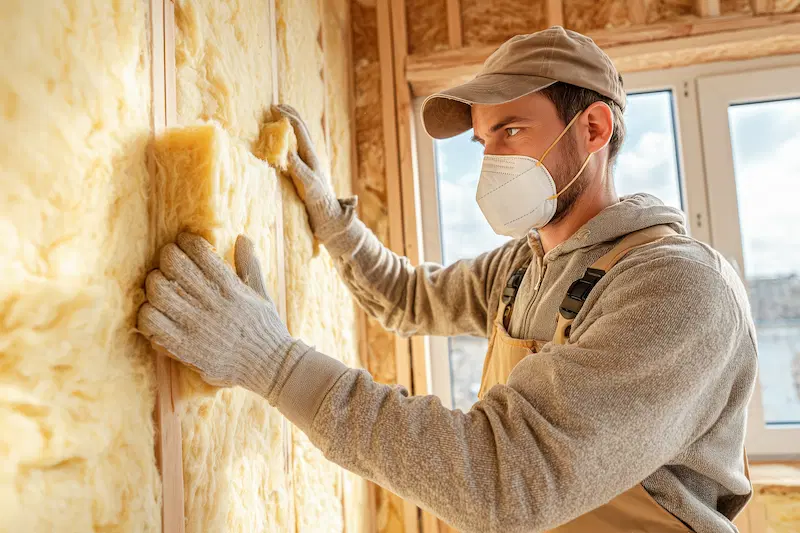
With wildfires becoming more frequent in parts of Western Canada and residential fires still a common threat in both urban and rural areas, using non-combustible or fire-resistant insulation materials can literally buy time when every second counts.
This comprehensive guide explores the best fireproof insulation materials available to Canadian homeowners in 2025. Compare the pros and cons of each option to make the best decision that suits your needs, budget, and safety goals.
Check the lowest prices for fireproof insulation in your area. Fill out the short online form to receive FREE and NO-OBLIGATION quotes.
Signs you need to upgrade the insulation of your home
Homeowners often overlook insulation until a problem arises.
If you notice your energy bills are rising, or that your HVAC system is struggling to maintain comfortable temperatures in the home, outdated insulation could be to blame.
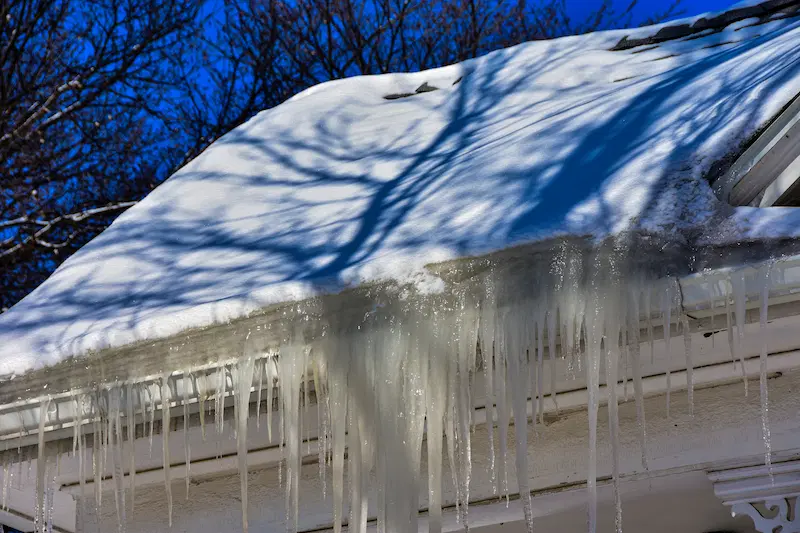
Here are the most common signs it’s time to upgrade your home insulation:
1. High Energy Bills
If your heating and cooling costs continue to rise despite consistent use, your insulation might be inadequate. Poor insulation allows heat to escape in winter and enter the home in summer, placing additional strain on your HVAC system.
2. Uneven Room Temperatures
Uneven temperatures across your home often indicate gaps or insufficient insulation in walls, floors, or ceilings.
3. Drafts and Cold Spots
If you feel a breeze even with doors and windows closed, that’s a classic sign of air leakage due to weak or inadequate insulation. This is especially common around attic hatches, crawlspaces, or rim joists.
4. Ice Dams in winter
Ice dams that form on the edge of your roof indicate that heat is escaping from your attic and melting the snow, which then refreezes. This means your attic insulation is underperforming, which could cause mould and water damage.
5. Overworked HVAC System
If your HVAC system runs continuously without achieving your desired indoor temperature, it may be due to poor insulation causing it to work overtime.
6. Moisture, Mold, or Mildew
Insulation that absorbs water or deteriorates because of moisture loses its thermal resistance. This can lead to mold growth which poses health risks to the people in your home.
Modern fire-resistant options like mineral wool or spray foam are both moisture-resistant and mold-proof.
7. Older Home without recent upgrades
If your home was built before the 1990s and hasn’t received an insulation upgrade since, it is likely under-insulated according to today’s standards. Older homes often contain materials that are no longer considered efficient or safe.
8. Pest Problems
Unwanted critters like rodents or insects can burrow into old or degraded insulation. This not only compromises its effectiveness but can also pose serious hygiene and fire risks.
9. Indoor noise
If you can hear street sounds or every step inside the home, your insulation is not performing its job as a sound barrier. Fire-resistant materials like stone wool offer excellent soundproofing and fire protection.
10. Visible Insulation Damage
If you notice sagging, compressed, discolored, or crumbling insulation in your attic, it is time to replace or upgrade your home’s insulation.
Upgrading your home’s insulation isn’t just about saving on energy bills—it’s also about improving comfort, preventing damage, and enhancing safety.
If you see any of these warning signs, consult an insulation professional and explore modern, fire-resistant options that meet today’s building standards. Acting early can save you money, protect your home, and give you greater peace of mind.
What Is Fireproof Insulation?
Fireproof or fire-resistant insulation refers to materials designed to resist ignition and delay the spread of flames in a fire.
These materials don’t catch fire easily, and in the event of a fire, they won’t release toxic smoke or melt rapidly. This gives the occupants of the home time to evacuate to safety.
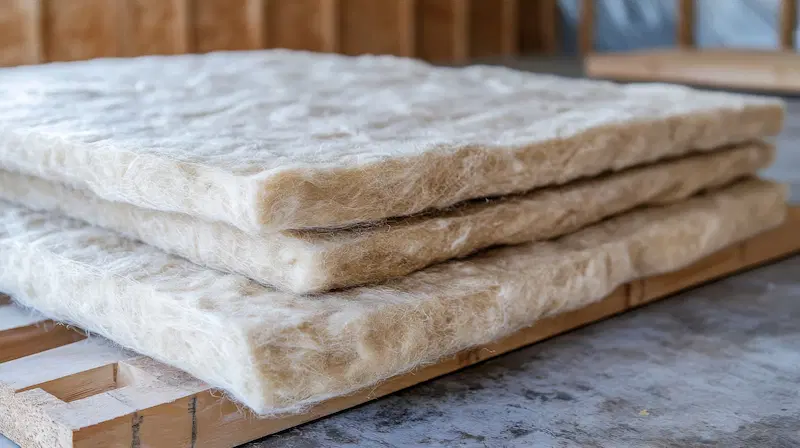
Most fireproof insulation is classified as non-combustible or Class A fire-rated, meaning it meets stringent safety standards in both Canada and the U.S.
Is Fireproof Insulation Mandatory?
Fireproof insulation is not mandatory for all areas of the home, but there are legal fire-resistance standards that apply in specific situations.
A brief overview of the Canadian Building Code Requirements
The National Building Code of Canada (NBCC) and provincial codes like the Ontario Building Code (OBC), or the British Columbia Building Code (BCBC), do not require all insulation in the home to be fireproof.
However, they do require that building materials meet minimum flame-spread and smoke-development standards in essential areas.
Insulation in fire-rated assemblies (such as between a garage and living space, or separating units in a duplex) must be non-combustible or installed behind an approved thermal barrier such as a layer of drywall, for code compliance.
In addition, the insulation must have a flame-spread rating of 25 or less and a smoke-developed index not exceeding 50, in accordance with standardized fire testing protocols such as CAN/ULC S102.2 or ASTM E84.
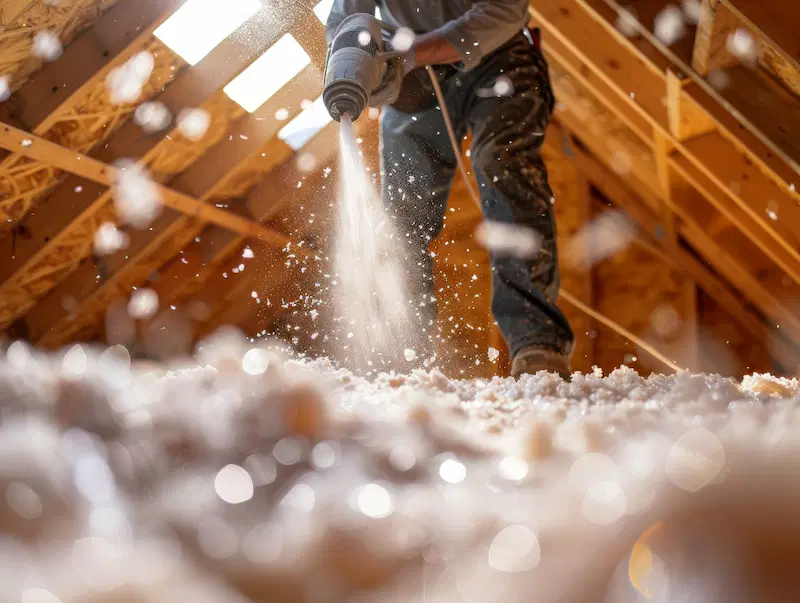
Insulation in concealed spaces (behind walls or in attics):
1. May be combustible, but must be installed behind a protective thermal barrier (typically ½” drywall or similar fire-rated material).
2. Spray foam insulation, for example, requires a 15-minute thermal barrier unless it has been specifically tested and approved for exposed use.
Multi-family buildings, high-rises, or commercial properties:
- Must use non-combustible insulation in certain areas like exit stairwells, elevator shafts, or fire separations between units.
- Insulation must meet the required fire-resistance rating of wall/floor/ceiling assemblies, which is typically 1–2 hours.
Although fireproof insulation is not required for the entire home, using it can enhance your safety and may be necessary to pass inspections for renovations and new builds.
Top Fireproof Insulation Types in Canada
Not all insulation materials are created equal—especially when it comes to fire safety.
Some insulation materials ignite easily or release toxic smoke. Others are designed to resist high temperatures and slow the spread of flames. In Canada, where homes need to withstand harsh winters and meet strict safety standards, choosing the right fire-resistant insulation is essential.
Below, we break down the most reliable fireproof insulation options available in Canada today. Whether you are building a new house or renovating an old one with safety in mind, these materials offer peace of mind without sacrificing energy efficiency or comfort.
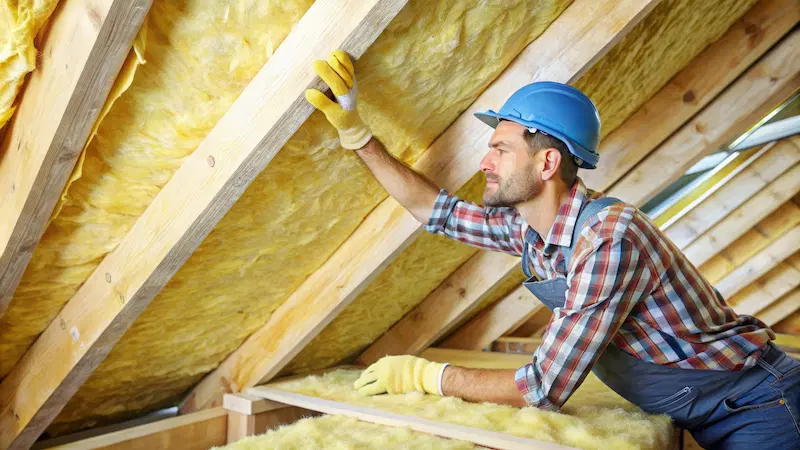
Here are the top-rated fire-resistant insulation materials available across Canada:
1. Mineral Wool (Rock Wool or Stone Wool)
Best Overall Fire-Resistant Option
- Fire Rating: Non-combustible, withstands up to 1,093°C (2,000°F)
- R-Value: R-3.0 to R-4.2 per inch
- Popular Brands: ROCKWOOL, Thermafiber
Mineral wool is made by spinning molten basalt or industrial slag into dense, fibrous batts. It has excellent thermal, soundproofing, and fire-resistance properties.
What are the Pros and Cons of Mineral Wool?
Pros:
- Will not burn or emit smoke
- Water and mold-resistant
- Excellent acoustic insulation
- Durable and pest-resistant
Cons:
- Slightly more expensive than fiberglass
- Heavier and a bit harder to cut
Mineral Wool insulation is best used for:
- Exterior and interior walls
- Attics and ceilings
- Multi-family units and basements
ROCKWOOL Comfortbatt is one of the most trusted and widely available options, ideal for both DIY and professional installations.
2. Fiberglass Insulation (Fire-Retardant Grade)
Best Budget-Friendly Fire-Resistant Insulation
- Fire Rating: Class A (non-combustible core), but may have combustible facings
- R-Value: R-2.9 to R-3.8 per inch
- Popular Brands: Owens Corning, Johns Manville, CertainTeed
Fibreglass batts or blown-in insulation are made from fine glass fibres. The insulation itself won’t burn, but the paper facing often found on batts can be combustible.
What are the pros and cons of fibreglass insulation?
Pros:
- Affordable and widely available
- Easy to install for DIY enthusiasts
- Lightweight
Cons:
- Must avoid Kraft paper–faced batts unless they’re covered by drywall
- Can irritate skin and lungs during installation
Fibreglass insulation is ideal for:
- Attics, wall cavities, floors
- Homes with existing stud spacing
- Renovations on a budget
In Ontario and BC where fire codes are strict, unfaced fibrerglass is preferred for fire-rated assemblies.
3. Spray Foam Insulation (With Fire Retardant)
Best for Air Sealing + Fire Resistance (with proper barriers)
- Fire Rating: Requires a thermal barrier (like drywall or intumescent paint)
- R-Value: R-6.0 to R-7.0 per inch (closed-cell)
- Popular Brands: Icynene, Demilec, BASF Walltite
Spray foam expands upon application and create a seamless barrier against air leaks and moisture. It can be combustible unless treated or covered.
What are the pros and cons of spray foam insulation?
Pros:
- Highest R-value per inch
- Seals cracks and gaps effectively
- Adds structural strength (closed-cell)
Cons:
- Needs professional installation
- Requires thermal or ignition barriers by code
- Can emit fumes during a fire if untreated
Spray foam insulation is best used for:
- Rim joists, crawl spaces, roofs
- Hard-to-insulate spaces with air leaks
Check closed-cell spray foams approved under CAN/ULC S705.1 for fire resistance when used with approved coverings.
4. Cellular Glass (Foamglas)
Most Durable and 100% Non-Combustible
- Fire Rating: Completely non-combustible
- R-Value: R-3.4 to R-4.0 per inch
- Popular Brands: Owens Corning Foamglas
Cellular glass insulation is made from crushed recycled glass and carbon. This rigid board insulation is fireproof, waterproof, and vapor-impermeable.
What are the pros and cons of cellular glass insulation?
Pros:
- Cannot burn, melt, or produce smoke
- Pest- and mold-resistant
- Excellent for thermal bridging protection
Cons:
- Expensive and heavy
- Limited availability in residential markets
Where to use Cellular glass insulation:
Cellular glass insulation such as Foamglas® is a premium fireproof material best suited for applications where non-combustibility, moisture resistance, and compressive strength are critical. It’s ideal for:
- Flat roofs, foundations, and mechanical rooms
- Industrial buildings or high-risk fire zones
- Underslab insulation in commercial or hybrid residential-commercial buildings
Think about using Foamglas under slabs or at the foundation level to create a durable, non-flammable thermal barrier that also resists water and pests—making it an excellent choice for basements and below-grade installations.
5. Cementitious Foam (Air Krete)
Green Building + Fireproof Solution
- Fire Rating: Non-combustible, does not burn or emit smoke
- R-Value: R-3.9 per inch
- Popular Brands: Air Krete
Made from magnesium oxide and air, this open-cell foam is pumped into walls similarly to spray foam but is completely inorganic and eco-friendly.
What are the pros and cons of cementitious foam insulation?
Pros:
- Fireproof, non-toxic
- Great sound insulation
- Doesn’t shrink or off-gas
Cons:
- Limited installer network in Canada
- Higher upfront cost
- Not suitable for exposed outdoor conditions
Cementitious foam insulation is best used for:
- Retrofitting old walls without tearing them down
- Eco-conscious home builds and schools
If you’re building to LEED or Passive House standards, Air Krete is a strong, fire-safe choice for interior wall fills.
To make it easier to compare these optio
How much does fireproof insulation cost in Canada?
The cost of fireproof insulation in Canada depends on the type of material, the area being insulated, and whether it’s a new installation or a retrofit. While fire-resistant options tend to be more expensive upfront, they offer long-term value through improved safety, durability, and energy efficiency.
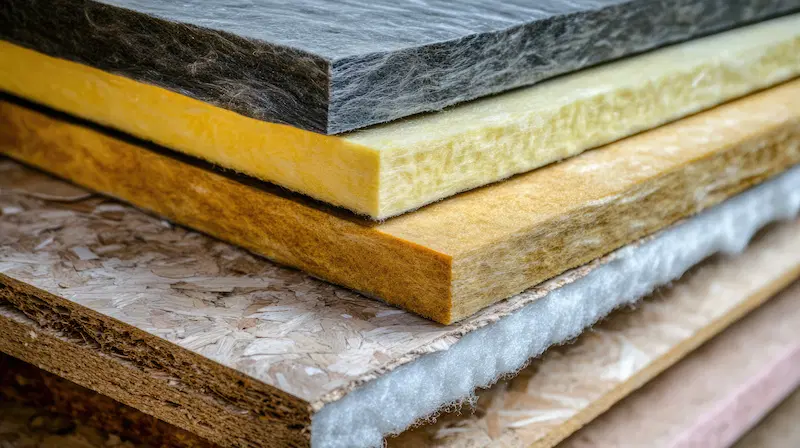
Here’s a breakdown of average installed prices by insulation type:
1. Mineral Wool (Rockwool or Stone Wool)
- Installed Cost: $3.00 – $5.00 per square foot
- Best For: Walls, attics, floors, and fire-rated assemblies
- Features: Naturally fire-resistant, sound-absorbing, and moisture-resistant
2. Fiberglass Batt Insulation (Fire-Rated)
- Installed Cost: $2.00 – $3.50 per square foot
- Best For: Interior and exterior walls, ceilings
- Notes: Budget-friendly and meets fire code when paired with drywall
3. Fire-Resistant Spray Foam (Closed-Cell)
- Installed Cost: $4.00 – $7.00 per square foot
- Best For: Rim joists, basements, crawlspaces, hard-to-reach areas
- Notes: Must be covered by a thermal barrier unless certified as ignition-resistant
4. Rigid Foam Boards (with Fire-Resistant Coating)
- Installed Cost: $3.50 – $6.50 per square foot
- Best For: Basement walls, exterior sheathing
- Notes: Must be used with a fire-protective layer like drywall or intumescent paint
5. Cementitious or Foamed Glass Insulation
- Installed Cost: $6.00 – $10.00+ per square foot
- Best For: Industrial or specialty fire-rated applications
- Notes: Extremely fire-resistant but costly; rarely used in residential settings
| FIREPROOF INSULATION COST COMPARISON (2025 ESTIMATES) | ||||
| Type | Average Cost to Install (Per Sq. Ft.) | Ideal for Use | Fire resistance | Description |
| Mineral Wool | $3 – $5 | Attics, walls, floors, fire-rated assemblies | Excellent | Provides soundproofing and moisture resistance |
| Fibreglass | $2 – $3.50 | Walls and ceilings with thermal barrier | Good | Affordable, Must be installed with drywall or fire-rated sheathing |
| Spray-Foam (closed cell) | $4 – $7 | Crawlspaces, basements, and rim joists | Moderate with thermal barrier | Needs a 15-minute fire barrier unless you use a fire-rated product |
| Rigid Foam Board (with coating) | $3.50 – $6.50 | Under-slab, basement walls, exterior sheathing | Good with barrier or coating | Needs intumescent paint or drywall for code compliance |
| Cellular glass | $6.50 – $10 | Foundations, mechanical rooms, and flat roofs | Excellent | Industrial grade, high-performance, more expensive |
| Cementitious Foam | $6 – $12 | Specialty or industrial fire-rated zones | Excellent | Used in commercial applications, rare in residential properties |
Now that you have the information on these types of fireproof insulation, you can choose the right one for your needs and budget.
Regional Price Differences of Fireproof Insulation
Urban areas like Toronto, Vancouver, or Calgary tend to have higher labour costs.
Remote regions may face higher material prices due to transportation and limited contractor availability.
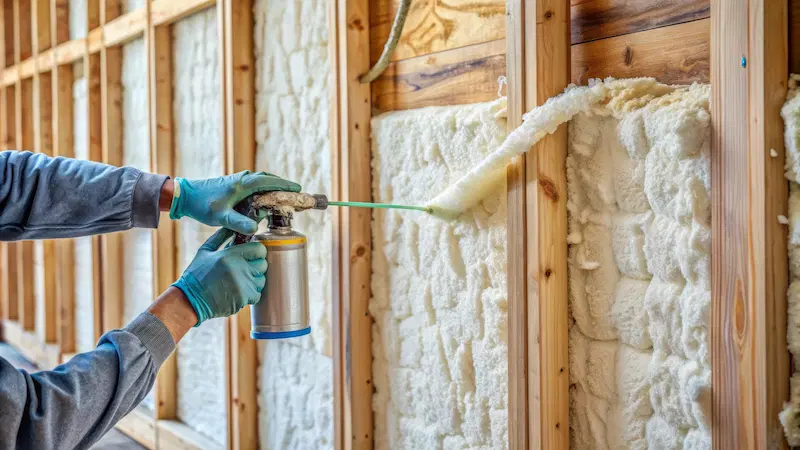
In Ontario and B.C., energy-efficiency grants may offset some costs when upgrading to fire-safe, high-performance insulation.
Other Factors that Affect Insulation Costs
Beyond the base price of materials and installation, several factors can also influence the final cost of adding fireproof insulation to your home.
Understanding these variables can help you budget more accurately and avoid unexpected expenses.
- Accessibility: Tight spaces and older homes may require more labour
- Preparatory work: Removing old insulation or adding vapour barriers adds to the price
- Volume discounts: Larger projects typically reduce the per-square-foot rate
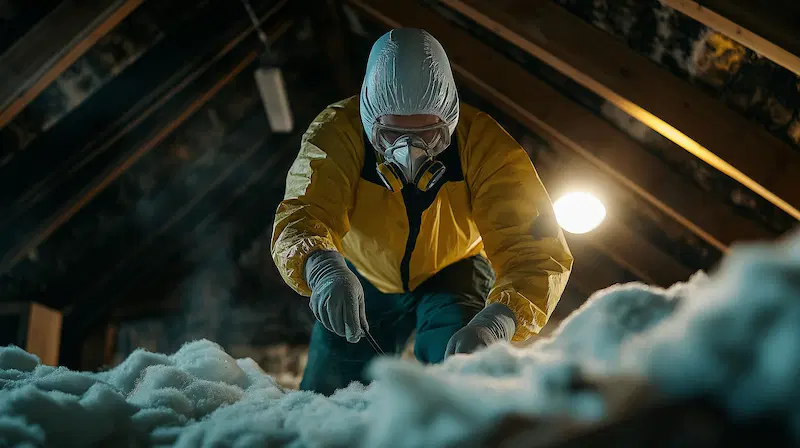
Insulation Types That Are Not Fire-Resistant
While many products offer good thermal insulation, not all are safe in a fire. Be careful with:
- Expanded Polystyrene (EPS): Melts quickly, and emits smoke.
- Extruded Polystyrene (XPS): Burns and contributes to flame spread.
- Open-Cell Spray Foam (untreated): Can be highly flammable.
These options may still be used in applications where they are fully encased in non-combustible materials, but they are not fireproof as is.
How to Know if Insulation Is Fire-Rated in Canada
Look for certifications like:
- CAN/ULC S102 or S114: Canadian flammability ratings for building materials
- ASTM E84: U.S. standard for flame and smoke development
- Class A Rating: Best fire resistance in building codes
Also, ensure your chosen insulation product is approved for use in your province’s building code. For example, Ontario’s OBC and BC’s BCBC both have specific insulation flame spread limits.
Is It Worth Investing in Fireproof Insulation?
Upgrading to fireproof insulation is definitely worthwhile, especially in areas requiring fire-rated assemblies or during home renovations.
Fire-resistant insulation not only boosts safety and energy savings but also adds to your home’s resale value and code compliance.
Get Accurate Fireproof Insulation Quotes for Your Home

Every home is different—and so is every insulation project.
Whether you’re retrofitting a small attic or insulating a new home addition, the best way to understand your real costs is by getting tailored quotes.
We connect Canadian homeowners with licensed, local insulation professionals who can assess your space, recommend the right fireproof materials, and provide free, no-obligation quotes.
Are you ready to get started? Fill out our short online form to compare prices from trusted contractors in your area—and find the best deal for your fireproof insulation upgrade.



